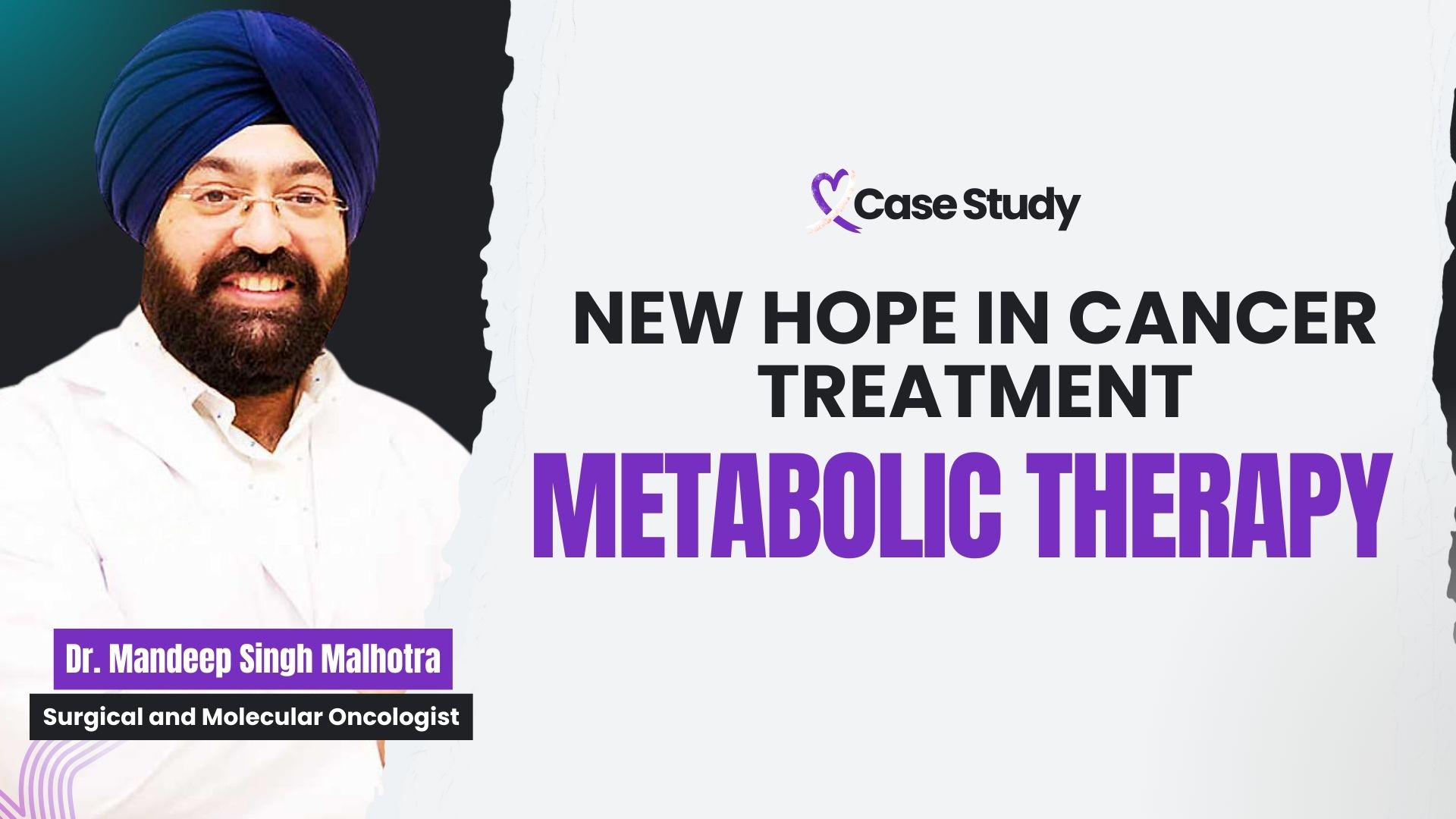Cancer treatment has come a long way, but challenges like recurrence and treatment resistance still remain.
While surgery, chemotherapy, and radiation continue to be the gold standard for killing cancer cells, researchers are now exploring new ways to make these treatments more effective.
One such promising approach is Metabolic Therapy, also known as Metabolomics.
This innovative method focuses on studying how cancer cells generate energy and using that knowledge to cut off their fuel supply—weakening them and making standard treatments work better. But while it sounds revolutionary, it’s not a “magic cure” and must be used carefully, alongside proven treatments.
In this blog, Dr Mandeep Singh Malhotra, break down what metabolic therapy is, how it works, when it’s helpful, and why timing and scientific planning are key to making it safe and effective.
What is Metabolic Therapy?
Every cancer cell needs energy to grow, multiply, and spread.
Metabolic therapy focuses on understanding how cancer cells get this energy—whether from:
● Sugar (glucose)
● Protein building blocks (glutamine)
● Fats
● Or a combination of these sources
Once we know the cancer’s fuel source, we can design ways to reduce or cut off that supply, making it harder for cancer to grow.
Is It a Replacement for Standard Cancer Treatments?
The answer is “NO”.
Metabolic therapy is not an alternative to surgery, chemotherapy, or radiation.
These standard treatments are essential because they directly destroy cancer cells.
Instead, metabolic therapy works alongside these treatments to:
● Weaken cancer cells
● Make standard treatments more effective
● Reduce the risk of recurrence
How Does It Work?
The first step is to understand the cancer’s “metabolic signature” through advanced tests such as:
● NGS (Next-Generation Sequencing)
● Transcriptomics
Based on these results, doctors may recommend:
● Diet changes – Low-sugar (low-glycemic), ketogenic, or plant-based diets depending on the cancer type
● Supplements and nutraceuticals – Curcumin, quercetin, EGCG, genistein, berberine
● Off-label medicines – Such as high-dose Vitamin C or hydroxychloroquine
These are then integrated into the standard treatment plan so that both approaches work together.
When Is Metabolic Therapy Most Useful?
● Newly diagnosed patients – Standard treatment should always come first. In many cases, this alone can cure the cancer.
● Recurrent cancers – Here, metabolic therapy can be more important. When cancer returns, it is often harder to treat, and combining metabolic therapy with standard treatment may improve results.
Why Timing Matters
The timing of metabolic therapy components is crucial.
For example:
● High-dose Vitamin C (a pro-oxidant) should be given during a certain chemotherapy window to maximize its effect.
● Antioxidants like curcumin or EGCG should be introduced after that period to reduce resistance and further weaken cancer cells.
If these steps are done at the wrong time, they can interfere with treatment and cause harm instead of benefit.
The Final words
Metabolic therapy is a promising and science-backed approach in cancer care.
When used correctly, it can:
● Support standard treatments
● Help prevent recurrence
● Improve overall treatment response
But if used without proper testing, timing, and medical supervision, it can be harmful.
Always work closely with your doctor before making any changes to your treatment plan.

